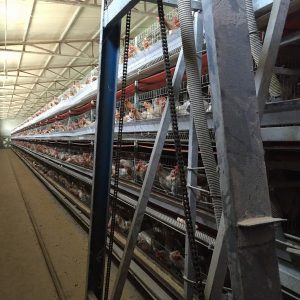Eight measures for forestland chicken feeding and management:
1 density
It is necessary to master the appropriate stocking density according to the area and topography of the forest land. The suitable size of a stocking area is 500-800 and covers an area of 3 to 5 acres. A stocking area implements all-in and all-out to prevent mixing of different batches of chickens. Raising, in order to facilitate management and epidemic prevention, to avoid cross-infection. Each community is surrounded by plastic nets, and each community must build chicken coops that can be used for shade, rain and supplementary feeding.
2 Blind chicks
The success or failure of brooding is the key, and high-quality chicks are the foundation. The chicks must come from a large-scale hatchery and be vaccinated with the Marek vaccine with a high protection rate within 24 hours of being out of the shell. Pay attention to the feeding management during the brooding period: choose high-quality full-price compound feed and clean drinking water to meet the growth needs of chicks. Keep proper temperature, humidity, ventilation, light, and reasonable breeding density in the brooding house.
3 Disease control
The key point of ecological chicken farming in woodland is to reduce the use of chemical drugs and make full use of natural conditions such as woodland sunlight, oxygen, weeds, humus containing beneficial bacteria and natural nutrients, and trace elements in the soil. The loose playground stimulates the immunity of chickens, cultivates healthy chickens with natural flavor, and produces high-quality meat and egg products. Comprehensive analysis of the needs of epidemic prevention and treatment, the use of vaccines has become the main means to meet the two-way requirements of food safety and biosafety.
Vaccinations are mostly concentrated in the brooding stage. At this stage, epidemic prevention must be carried out in strict accordance with a certain epidemic prevention schedule to improve the body’s immunity and resistance. Mainly do a good job in preventing epidemics such as Newcastle disease, infectious bronchitis, bursa of bursa, chicken pox, and avian influenza. The second is the prevention of coccidiosis. You can use a full-price compound feed with anti-coccidiosis drugs.
4 Grazing
When the brooding reaches 40 to 45 days, you can choose to graze at a sunny, low wind and suitable temperature. And three days before and after grazing, add a sufficient amount of electrolytic multi-dimensional in the feed and drinking water to enhance the anti-stress ability of the grazing chickens. The grazing time should be gradually extended according to the age and weather conditions, and finally the chickens can adapt to the grazing environment. The grazing area will gradually expand with the age of the chickens.
5 Reasonable supplementary feeding
5-6 times a day for the first two weeks of the brooding stage, and then reduce once a week until 3 times a day, and supplement feed once a day in the morning and evening after stocking. The supplementary feeding amount can be adjusted according to the different ages of the chickens and the different seasons to ensure the normal nutritional needs of the chickens.
6 Regular disinfection
The chicken house is disinfected once a week, the utensils are washed frequently, and the stocking site is all in and out. Rotation means that a batch of chickens are changed to one site, and they are raised once a year.
7 Prevention of pecking
Free-range chickens are as aggressive. In order to prevent feather pecking and anus pecking, electrolytic multi-dimensional and plaster powder should be added to the feed regularly, and goggles should be used for especially aggressive chickens.
8 Feeding microecological preparations, vitamins, and Chinese herbal medicines
A microecological preparation containing beneficial bacteria such as yeast, Bacillus subtilis, and Bifidobacterium, is capable of maintaining the intestinal health of chickens, promoting food decomposition, and producing nutritional active ingredients beneficial to human health in the process of digestion and metabolism. Vitamin A, D3, B12, E, etc. are not only good for the health of chickens, but also necessary for the human body. Chinese herbal medicines such as hawthorn, Shenqu, malt, and astragalus have the functions of nourishing the middle and nourishing qi, regulating digestive function and promoting the development of immune organs. These three types of additives all meet the requirements of food safety, and have significant effects on buffering stress and enhancing the body’s immunity when the weather changes.

